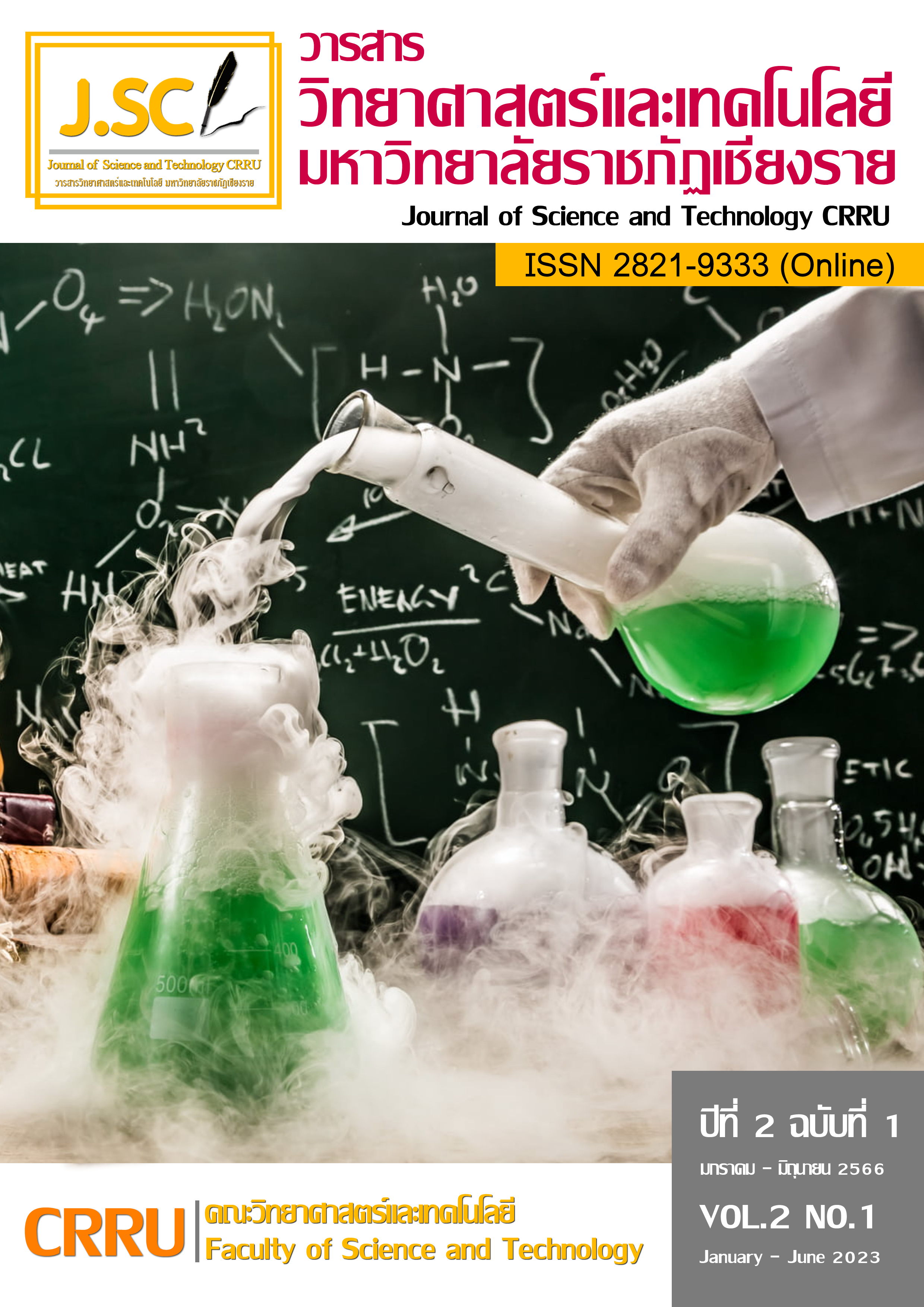DPPH radical scavenging activity and total phenolic content of Riceberry Rice, Black Gluten Rice, and Hom Nil Rice
Main Article Content
Abstract
This study was to investigate antioxidative in of Oryza sativa L., which are Riceberry Rice, Black Gluten Rice, and Hom Nil Rice. The measurement of antioxidation activity was carried out using DPPH as the testing reagent using Trolox as the standard antioxidant. The total polyphenol content in samples was measured by Folin - Ciocalteu method and compared using gallic acid as a standard. The study was found that, the antioxidative activity of the Black Gluten Rice against DPPH showing highest antioxidant activity considered IC50 value of 0.1026 mg/ml, and had a trolox equivalent antioxidative capacity (TEAC) value of 0.1257. The secondary is the Riceberry Rice, and the Hom Nil Rice is lowest. The Black Gluten Rice has highest total polyphenol content, which is 10.32 percent by weight. The high proportional correlation was observed between antioxidant activities and total polyphenols (p < 0.01).
Article Details

This work is licensed under a Creative Commons Attribution-NonCommercial-NoDerivatives 4.0 International License.
Journal of TCI is licensed under a Creative Commons Attribution-NonCommercial-NoDerivatives 4.0 International (CC BY-NC-ND 4.0)
References
นวลศรี รักอริยะธรรม และ อัญชนา เจนวิถีสุข. (2545). แอนติออกซิแดนท์ : สารต้านมะเร็งในผักสมุนไพรไทย. เชียงใหม่: นพบุรีการพิมพ์.
สมาคมเพื่อการวิจัยอนุมูลอิสระไทย. (2555). อนุมูลอิสระและสารต้านอนมูลอิสระ (พิมพ์ครั้งที่ 1). กรุงเทพฯ: สำนักพิมพ์นวัตกรรมสุขภาพ.
Papas, A.M. (1999) Diet and Antioxidant Status. Food and Chemical Toxicology, 37, 999-1007. https://doi.org/10.1016/S0278-6915(99)00088-5.
Roberfroid, M.B. & Calderon, P.B. (1995). Free Radicals and Oxidation Phenomena in Biological Systems. New York, Marcel Dekker, Inc. U.S.A.
Parsons, Andrew F. (2000). An Introduction to Free Radicals Chemistry. Cambridge: Cambridge Univ. Press.
Maisuthisakul, P., Suttajit, M., & Pongsawatmanit, R. (2006). Assessment of phenolic content and free radical-scavenging capacity of some Thai indigenous plants. Food Chemistry, 100(4), 1409-1418.
Mongkolsilp, S., Pongbupakit, I., Sae-Lee, N., & Sitthithaworn, W. (2004). Radical Scavenging Activity and Total Phenolic Content of Medicinal Plants Used in Primary Health Care. SWU J Pharm. Sci., 9(1), 32–35.
ปณัฐฐา ไชยมุติ. (2546). การทดสอบฤทธิ์ต้านอนุมูลอิสระของพืชสมุนไพร 7 ชนิด. (วิทยานิพนธ์ปริญญามหาบัณฑิต). มหาวิทยาลัยสงขลานครินทร์, คณะวิทยาศาสตร์, สาขาวิชาชีวเคมี.
ไมตรี สุทธจิตต์. (2543). ความสามารถของสารสำคัญในการต่อต้านออกซิเดชันของสมุนไพรไทย : รายงานการวิจัยแพทย์แผนไทยฉบับสมบูรณ์. เชียงใหม่: มหาวิทยาลัยเชียงใหม่.
พัชราภรณ์ รัตนธรรม, ณัฏฐา เลาหกลจิตตา และ อรพิน เกิดชูชื่น. (2556). สารประกอบฟินอลิก แอนโทไซยานินและสมบัติการต้านอนุมูลอิสระของข้าวกล้องสีงอก. วารสารวิทยาศาสตร์ เกษตร, 44(2) พิเศษ, 441-444.
Cai, H., Zhang, Q., Shen, L., Luo, J., Zhu, R., Mao, J., … Cai, C. (2019). Phenolic profile and antioxidant activity of Chinese rice wine fermented with different rice materials and starters. LWT, Vol. 111, 226-234. Retrieved from https://doi.org/10.1016/j.lwt.2019.05.003


